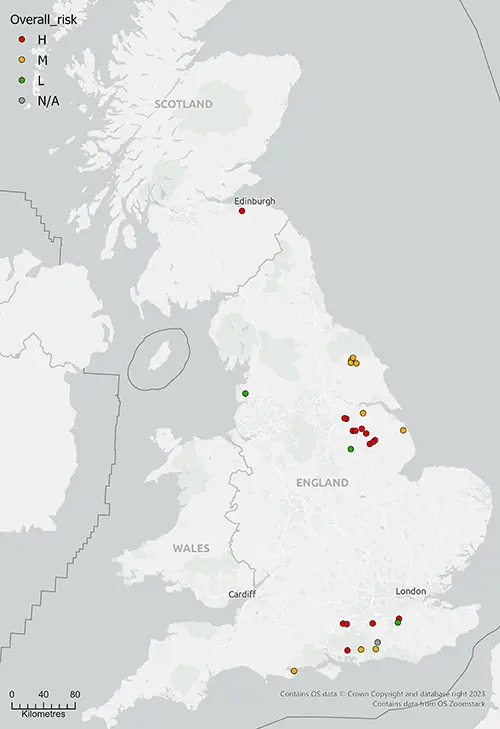The activity of microbes in sites used for the storage of carbon dioxide or hydrogen has the potential to negatively impact injection, storage or recovery of fluids[1]. Therefore, any planning of storage sites should include an assessment of the likelihood of microbial activity occurring at those sites. As part of the MOET project, a tool is being developed to aid microbial risk assessment at such sites.
Microbes are known to be found in many subsurface environments. The microbial communities encountered are adapted to the extreme conditions present, including (but not limited to) raised temperatures, pressures and salinities. In addition to microbes naturally present in the subsurface, operational activities such as drilling boreholes or the use of water flushes in oil and gas fields could introduce more microbes as contaminants. Carbon dioxide and hydrogen can be consumed by many types of microbes, with hydrogen providing a rich energy source for microbial growth. Sulphate reducing microbes[2] are often associated negatively with subsurface industry activities, with methanogens[3], acetogens[4] and iron reducers[5] also highlighted as microbial groups of interest. These microbial groups are a concern as their activity could cause economic losses in hydrogen and carbon dioxide storage for several key reasons:
- consumption of stored hydrogen
- contamination of stored fluids e.g. by microbial conversion of carbon dioxide and hydrogen to methane or hydrogen to hydrogen sulphide
- corrosion of metal operational parts often attributed to hydrogen sulphide production by sulphate reducing microbes
- blockage of flow paths by microbial biomass or microbiologically induced mineral precipitation
Within the MOET project, a subsurface microbial limits database is being developed which describes the potential for UK onshore and offshore geological subsurface storage sites to support microbial activity. It includes approximately 800 potential offshore and 30 potential onshore sites covering saline aquifers and oil and gas fields. For each of these sites the risk of microbial activity is assessed based on known limits of temperature, salinity, pH, porosity, permeability and pressure. Additionally, sulphate concentration is taken into consideration because of specific risks associated with the activity of sulphate reducing microbes. To allow users to assess the likelihood of microbial activity, an interactive risk-rating tool and associated maps are being produced. It is anticipated that this could be used as part of a screening process when planning hydrogen or carbon dioxide storage in depleted oil and gas fields or saline aquifers to assess the likelihood of microbial activity in specific locations. It will also highlight those sites where further data or research is required to adequately assess the likelihood of microbial activity before planning storage activities.
Figures 1 (onshore) and 2 (offshore) show subsurface sites and their microbial activity risk rating. Risk ratings are colour coded as follows:
- red for 'H' (high)
- orange for 'M' (medium)
- green for 'L' (low)
- grey for 'N/A' (no applicable rating, insufficient data)

